
— Kris Ashton
With the New Vehicle Efficiency Standard (NVES) laws coming into effect, automotive manufacturers have been scrambling to find ways to improve vehicle emissions while retaining performance. Nowhere has this been more pronounced than in the ute market, where buyers want large vehicles that can tow, go off road, and do work or family duties in the suburbs.
Diesel engines have long been the staple for this, providing loads of torque and good highway economy, but now car makers are turning to plug-in hybrids that employ small petrol engines. The latest example is GWM’s Cannon Alpha PHEV. Does it do everything the diesel Cannon does?
The plug-in hybrid version of the GWM Cannon Alpha comes in two model grades, the Lux for $59,990 and the Ultra for $66,990 (both before on-road costs).
PHEV utes remain comparatively rare and the Cannon Alpha’s key competitors are the Ford Ranger PHEV ($71,990) and the BYD Shark 6 ($57,900). While the Shark 6 appears substantially cheaper than the Cannon Alpha, it has limited off-road capability and a lower 2.5-tonne towing capacity.
A sense of spaciousness is perhaps its most pleasing attribute – it’s light and airy and the well-bolstered seats are a good size and shape. Soft touch surfaces and satin finishes abound in the Ultra (our test vehicle), with padding for the armrest, door handles, window sills, top of the dashboard and sides of the centre console.
The interior styling is as polarising as it gets. The satin-finish chrome, glossy piano black, faux 1970s woodgrain, textured aluminium-look inlays and analogue clock will either be to taste or really, really won’t.
The enormous 12.3-inch driver information screen and central infotainment screen (larger still at 14.6 inches) allow for generously proportioned iconography, so you’re never left squinting or wondering where something is. The steering wheel is comparatively slender – especially in the modern ute market, where everything tends to be buff and blokey – but also pleasant to the touch.
The armrest storage box doubles as a cooler and sports an ingenious sliding tray that moves backwards to expose two drink holders or forwards if you need loose items to hand. The wireless phone charging pad has a hole in one corner, so you can run a cord from the 12-volt socket (located in the side of the centre console) up through it and keep it from entangling in the driver’s feet.
Second-row comfort is superb. The seats are blessed with wide backs and loads of padding, and there’s adequate leg and foot room along with enough head room for a burly six-footer. Rear seat passengers also get one USB-A and one USB-C port, air conditioning vents, and two dedicated speakers. In the Ultra, a second set of electric seat controls is found near the right-hand bolster on the front passenger’s seat so rear occupants can move the seat forward if necessary.
A cute retro touch exclusive to the Ultra is the sliding rear window. It’s electrically operated, with the switch located on the rear of the centre console, meaning it’s accessible to rear seat passengers and (with a bit of reaching and fumbling) those in the front, too.
The Lux’s standard features list is pretty impressive for the price and consists of 18-inch black alloy wheels, automatic LED highlights, roof rails and side steps, keyless entry and push button start, faux leather seats (electrically adjustable for driver and front-seat passenger), a 14.6-inch touchscreen and 12.3-inch instrument cluster, wireless Apple CarPlay/Android Auto, dual zone climate control, a six-speaker sound system, and voice command functionality.
An extra $7000 for the Ultra might seem steep, but it delivers a front diff lock (the Lux only has a rear diff lock), a 60/40 split tailgate, rear sliding window, additional electric adjustment for the front seats, electrically reclining seats in the rear, heated and ventilated seats front and back, a massage function for the front seats, heated steering wheel, customisable interior lighting, a 10-speaker Infinity audio system, a head-up display, and automated parking systems.
GWM covers the Cannon Alpha with a general seven-year/unlimited kilometre warranty, plus a separate eight-year/unlimited kilometre warranty for the battery. The capped price servicing schedule for its PHEV models runs to $4615 over the seven-year warranty period.
ANCAP awarded the GWM Cannon Alpha five stars in June 2024. The report shows it achieved strong scores across the board, with an especially high rating in child occupant protection.
Standard safety equipment includes seven airbags, all the expected active collision mitigation systems, AEB junction assistance, traffic sign recognition, driver fatigue monitoring and trailer sway mitigation.
Under the bonnet is a hybrid system consisting of a 2.0-litre turbo petrol engine (180kW/380Nm) and an electric motor (120kW/400Nm) powered by a 37.1kW traction battery. It’s all managed via a nine-speed hybrid automatic transmission, and GWM claims a total system output of 350kW and 750Nm.
The battery provides up to 110km EV-only range (WLTP) the 50kW DC fast charging port allows for a 30-80 per cent charging time of 24 minutes. A 7kW home charger costs an additional $599. The Cannon Alphha PHEV also has a 6kW V2L capability, although unlike the Ford Ranger PHEV and BYD Shark 6 it does not have 230-volt power sockets.
The GWM Cannon Alpha PHEV is rated for 3500kg braked towing, putting it on par with class leaders in the broader ute market.
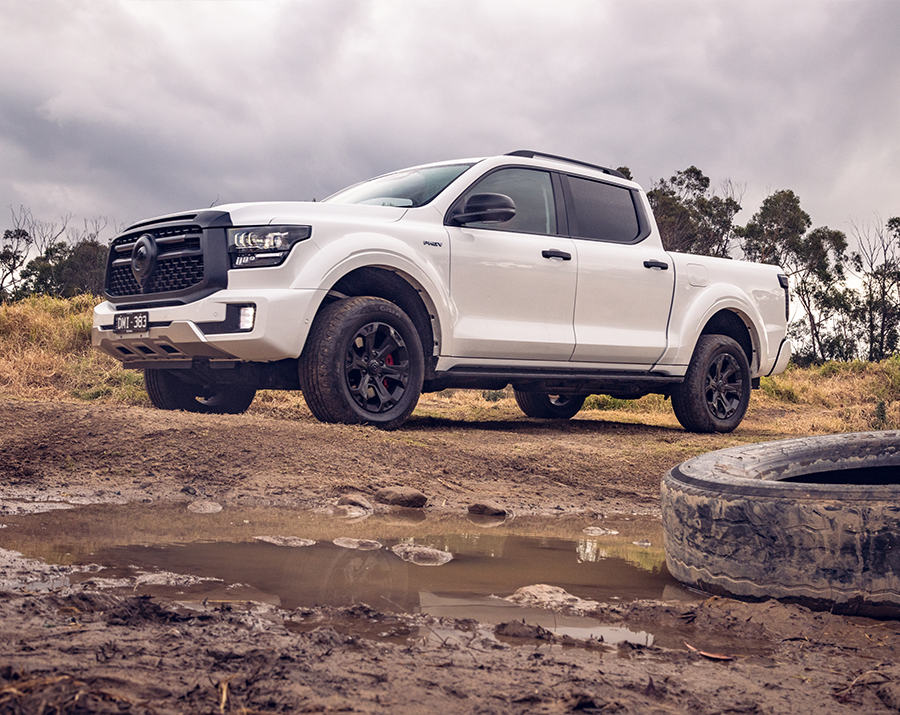
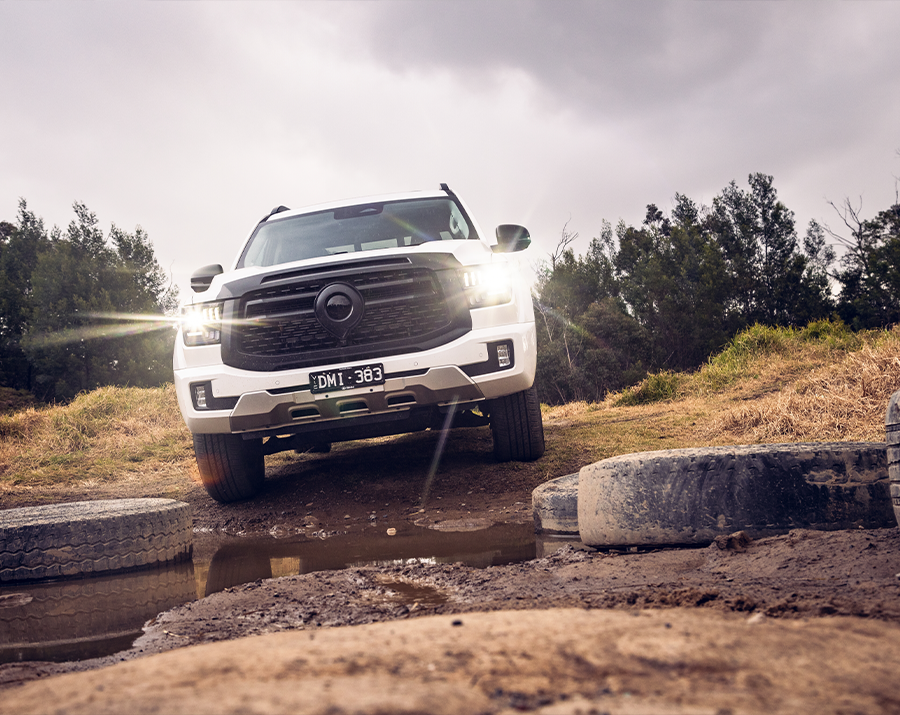
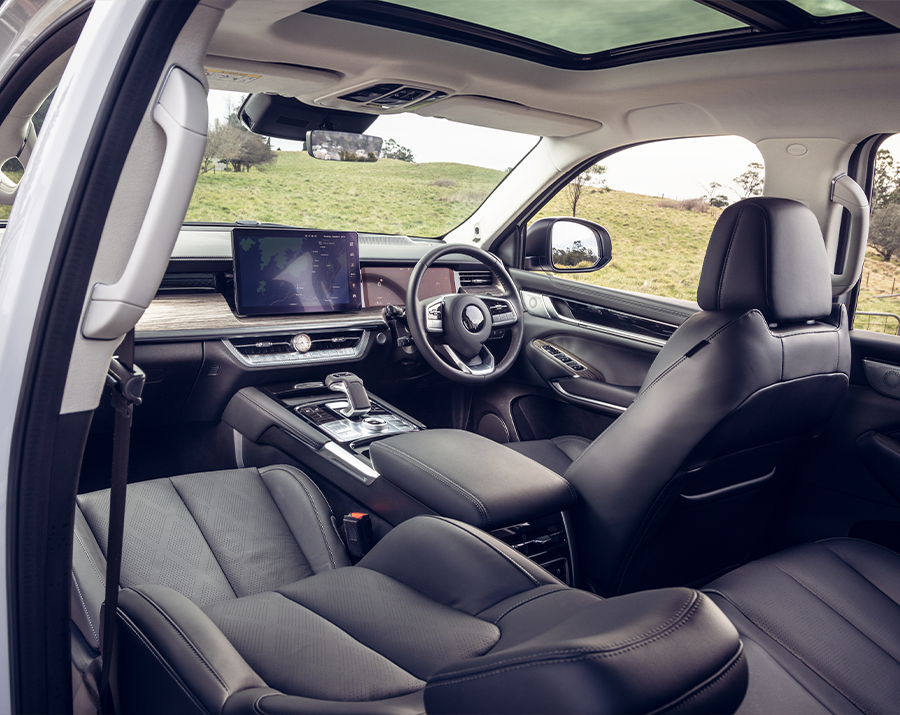
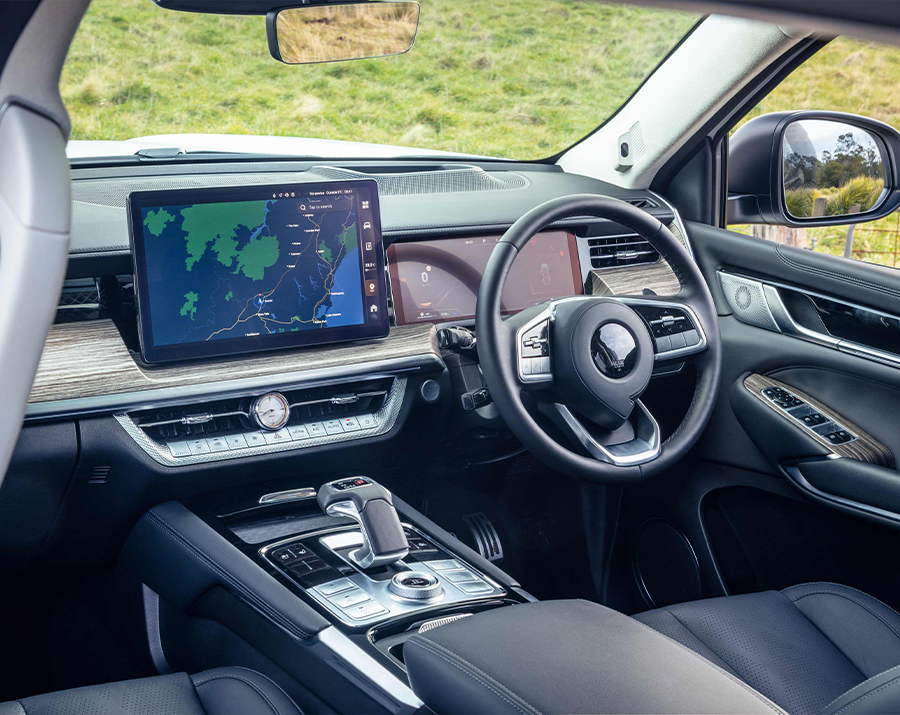
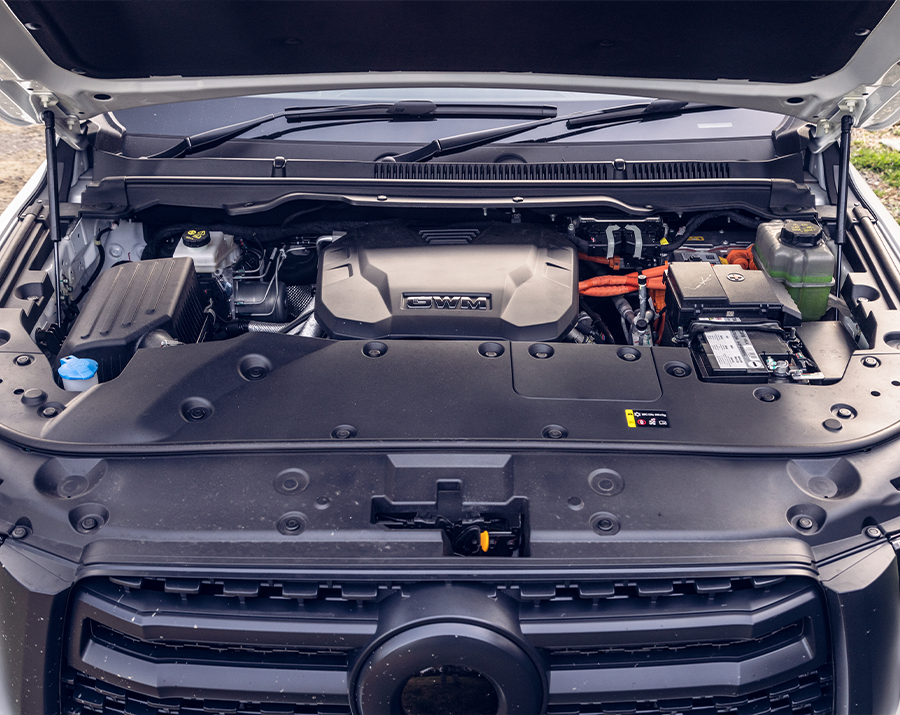
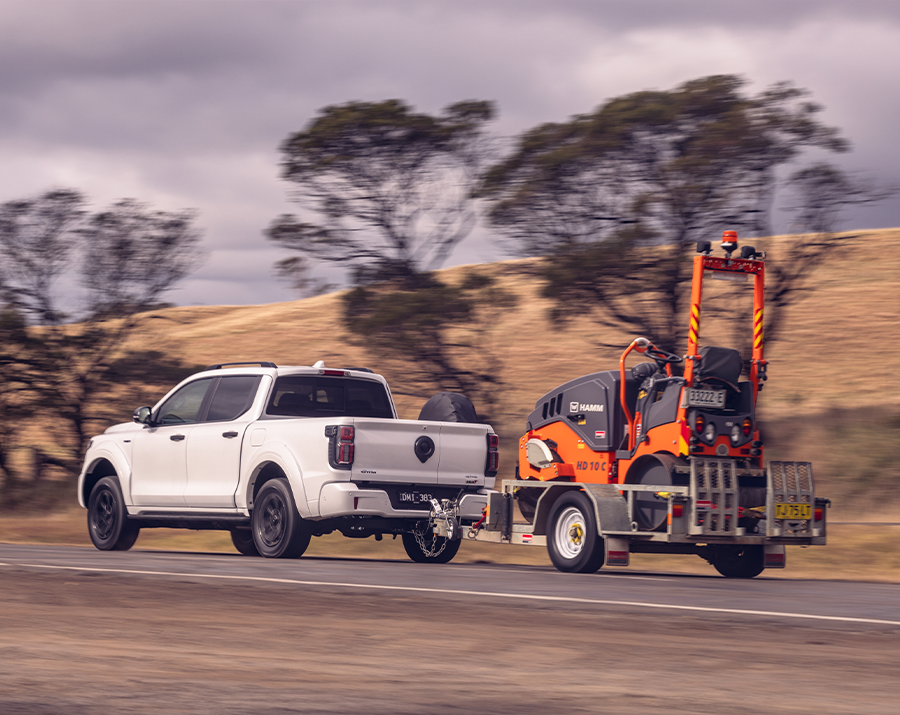
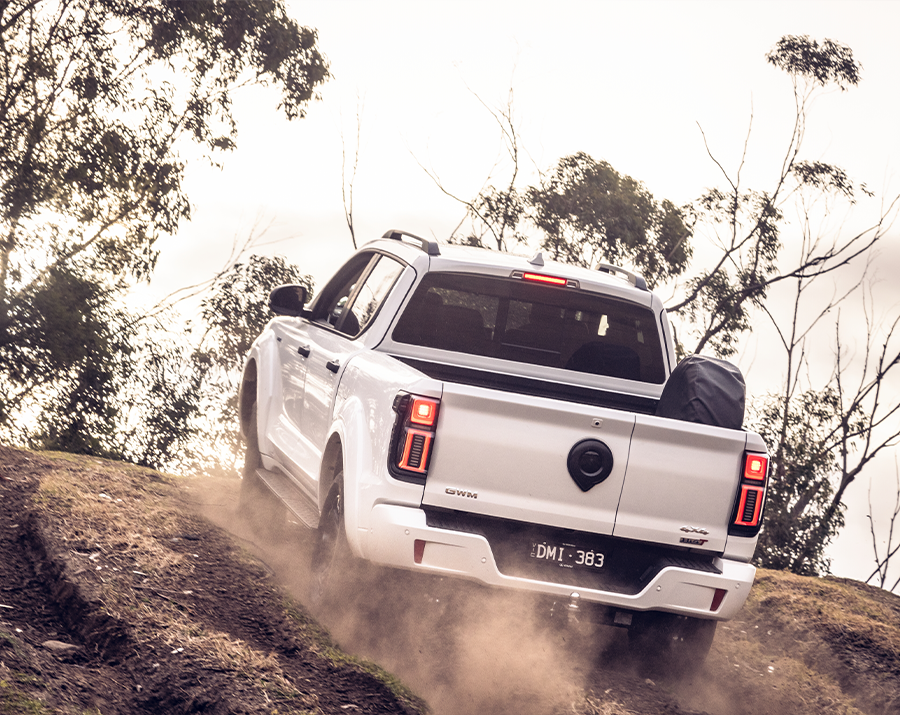
The electric gear shifter looks like something out of a starfighter and there’s a goofy ‘laser beam’ sound effect when you put it in drive. Despite this futuristic theatre, the Cannon Alpha doesn’t want for traditional switchgear and it’s an absolute delight to have air con controls, seat heaters and coolers, drive modes (including off-road settings) and more available via large buttons and dials.
Those functions given over to the touchscreen are immediately visible thanks to those sizable icons, and GWM’s software is a lot more logical and intuitive than many of its Chinese brethren. The one diversion from this is the digital indicator, which most car brands have done away with as ‘form over function’.
The hybrid drivetrain isn’t what you’d call seamless, and it’s quite noisy in relation to its competitors. GWM’s power and torque claims (300kW/750Nm) look impressive on paper, but the drivetrain can be a tad slow to react when you want some sudden acceleration, and it leans heavily on the petrol engine when you put your foot down (or if the battery’s running low on charge).
In general driving circumstances, though, the GWM Cannon Alpha PHEV feels muscular and responsive and equally adept on suburban streets and on the open road.
It boasts all the off-road credentials – a rear diff lock (and a front diff lock on the Ultra), high and low range settings, and an 800mm wading depth – giving it genuine capability. The hybrid drivetrain’s inconsistency does hamstring its off-road performance somewhat, however, and during our test drive on steeper rough stuff it wanted for power delivery on occasion.
Around town is where the Cannon Alpha shines, returning a staggering 2.9L/100km during real-world testing. Once we put it on the motorway and its battery charge waned, however, fuel consumption rocketed to 10-11L/100km. After towing 2000kg for a short while its fuel consumption meter indicated 15L+. Not a surprise given the Cannon Alpha itself tips the scales at 2810kg – quite a combined mass for a 2.0-litre petrol engine. Given the above, the Cannon Alpha is probably better suited to life as a tradie’s runabout or recreational vehicle than it is as a long-haul holiday car or serious tow vehicle.
The tailgate on the Ultra is quite clever. A short press of the button allows you to open it barn-door style, while a long press drops it vertically, permitting versatile loading options. The tray bed is far from the largest in its class, a concern further exacerbated by the full-size spare wheel bolted into the side of the tub (presumably because the battery precludes it being fitted to the vehicle’s underside as it is in most utes).
In the tray are three tie-down hooks rather than four, another sacrifice to the spare tyre. The supplied cover for the spare is only held in place by a couple of straps and some small magnets, and every time we got the Cannon Alpha on a motorway the cover would come loose and flap around in the wind. The whole arrangement has a whiff of cheap and cheerful about it.
Plug-in hybrid utes are a nascent and evolving species. Provided the GWM Cannon Alpha PHEV is charged regularly it will deliver exceptional fuel economy, and it can tow and go pretty much everywhere a Ford Ranger PHEV can while still offering DC charging and delivering on interior comfort. Drivetrain refinement is an issue, however, and if the petrol engine is asked to do the heavy lifting the bowser benefits quickly dissipate. Judged on its merits as a ute, it does many things well but also suffers from a few practical limitations. Think carefully about how you would use your ute before committing to purchase.
3 x pros
3 x cons